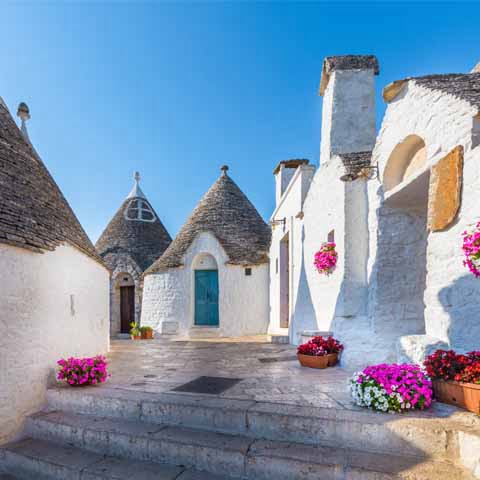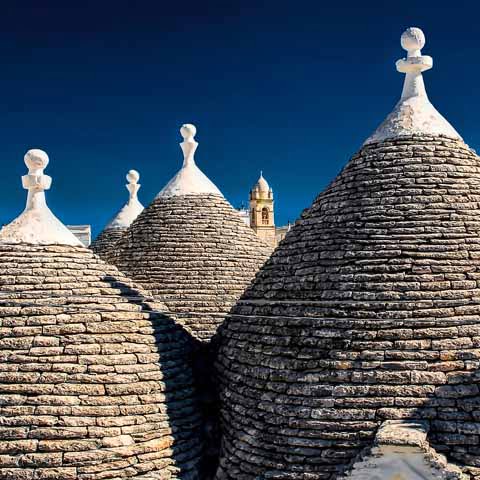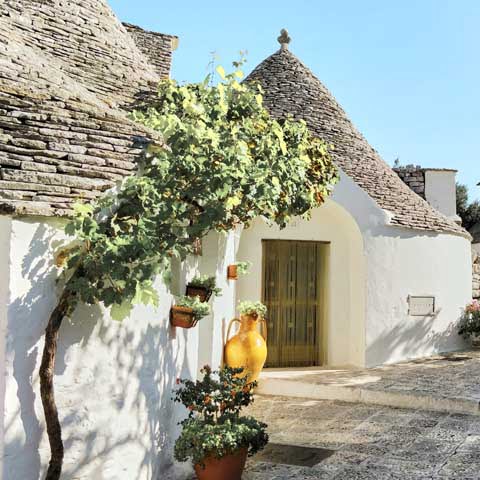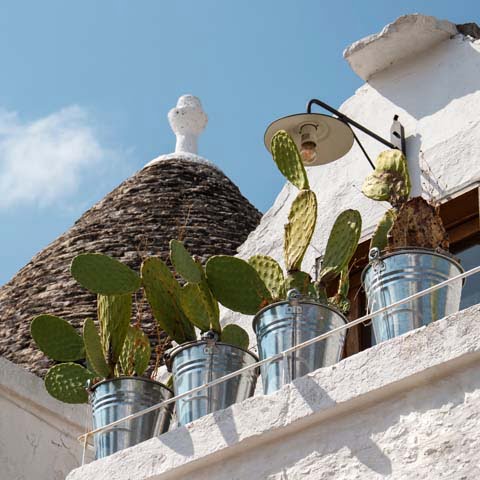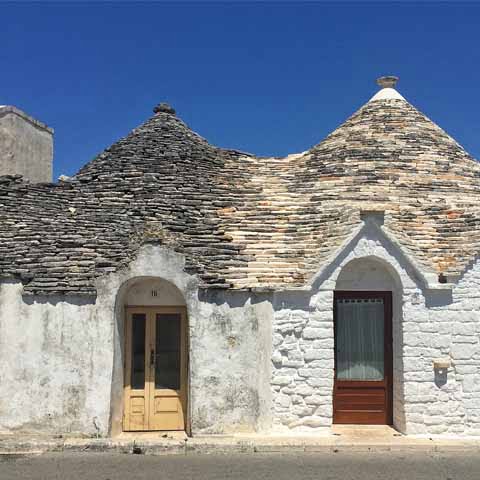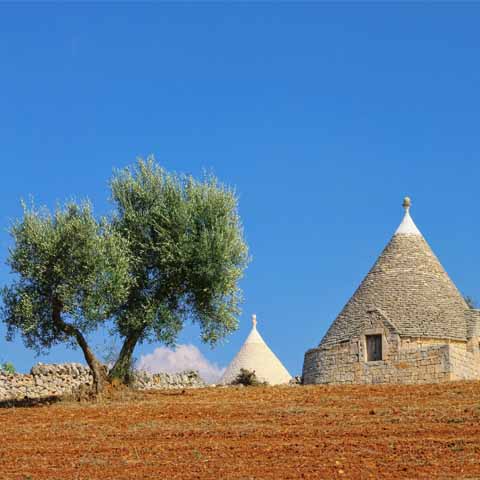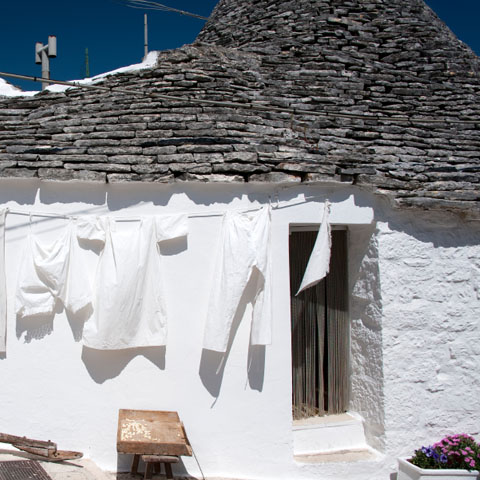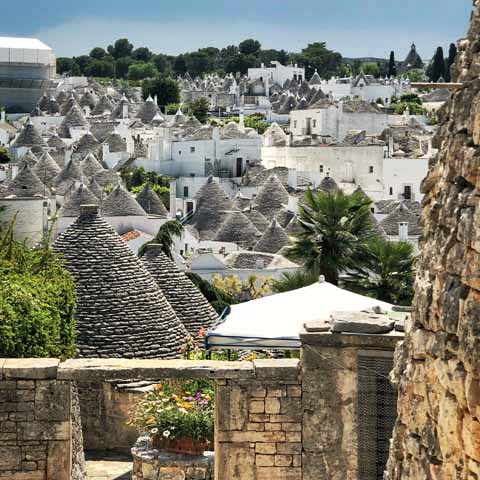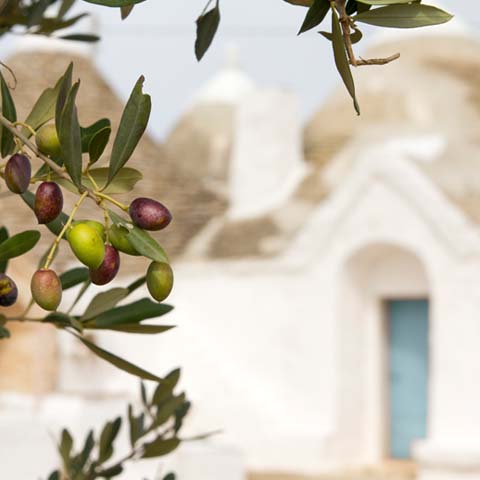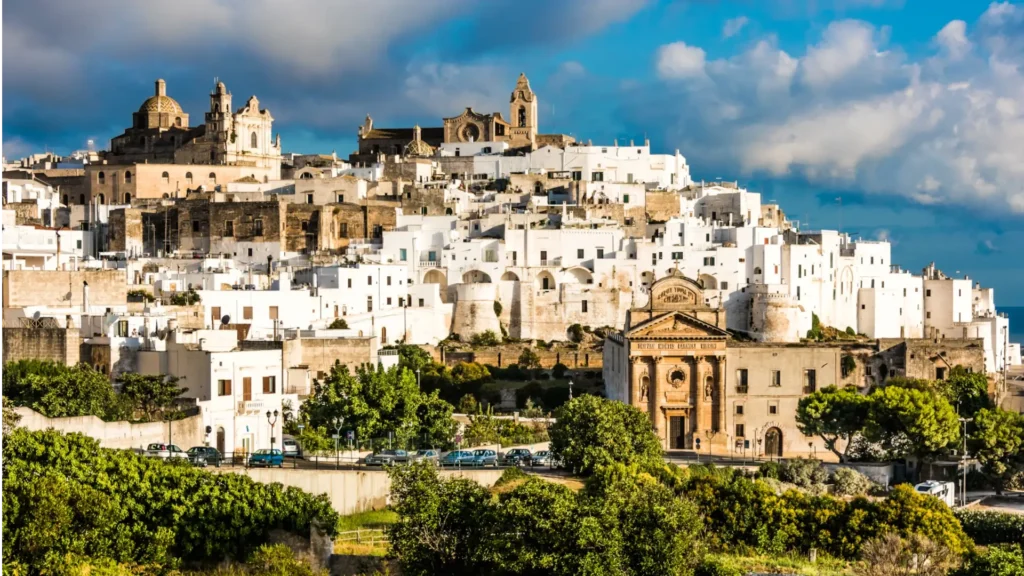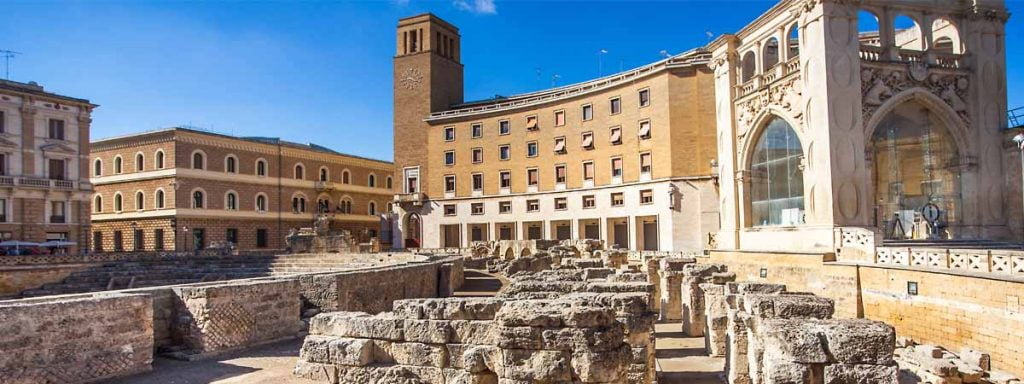Without a doubt, Alberobello is one of Italy’s most unique and characteristic towns. It is named after the oak forest that used to cover the area during primitive times called Arboris Belli, which means “beautiful trees.” Famous worldwide for its unique, ancient, limestone dwellings called trulli and deemed a UNESCO World Heritage Site, it features a population of nearly 11,000 people and has become increasingly popular for travelers in recent years.
The trulli of the area are the city’s crown jewels. Dating back to the fourteenth century, they were constructed out of dry stone and created without the use of mortar. The origins of the unique design were out of necessity. As feudalism began to reign and taxes were imposed on settlers, residents began constructing homes that could be easily and quickly dismantled. In addition, they could avoid paying new settlement taxes, because the trulli were considered impermanent due to their lack of mortar.
Unique to the Itria Valley, trulli are the main attraction for those traveling to the Apulia region in Southern Italy, with the greatest volume of trulli being in the western section of town. Divided into two areas – Rione Monti and and Rione Aia Piccola – this is the original location of the trulli settlement, featuring over 1,000 trulli clustered together.
Visitors can walk the small, winding streets and explore the area, taking in the fairytale-like quality of these charming dwellings. People-watching can be fun in these areas as well, as many of the trulli are still occupied by locals.
Within the historic trulli, many locals have capitalized on the influx of travelers by creating shops, restaurants, bars, and even hotels within the unique buildings. During the months of May to October, travelers can expect Alberobello to be a bit crowded with tourists from across the globe hoping to experience the trulli of the city. However, visiting the city provides a once in a lifetime experience by exposing travelers not only to the unique trulli, but also to the rich history and culture of the Apulia region.
GEOGRAPHY & CLIMATE IN ALBEROBELLO, ITALY
Located in the region of Apulia, Alberobello’s climate is categorized as Mediterranean. This means travelers can expect hot, dry summers with ample sunlight throughout the season. In fact, Apulia is considered to be one of Italy’s hottest and driest regions. Despite this, Alberobello’s elevation allows for evening breezes and cooler temperatures during the summer compared to other parts of the region. The winters are characterized by occasional rain and lower temperatures with little to no snowfall. While the Murge Plateau partially protects the western part of Alberobello, the town’s location on the coast exposes it to winds off the sea that can cause quick shifts in temperature, specifically the sirocco and foehn winds that bring heat from the south.
The geography of Alberobello helps define life throughout the city, as the town itself is perched atop two hills. On the eastern hill sits the “new” Alberobello, home to modern architecture and more current lifestyles, whereas the western hill features “old” Alberobello, home to the two districts of Rione Monti and Rione Aia Piccola, as well as the area’s historic trulli.
The landscape surrounding the city of Alberobello is storybook-like, featuring lush green countryside and charming wooded areas.
WHEN IN ALBEROBELLO
Seeing the town’s traditional trulli is, of course, a must-see when in Alberobello. A great trullo to start at is Trullo Sovrano. Dating back to the early seventeenth century, it is the city’s only 2-story trullo. It was originally a home for a priest’s family, however today it serves as a “living” museum, depicting the everyday life of Alberobello’s residents with its recreated rooms. It also includes a souvenir shop.
Not far from Trullo Sovrano is the Basilica of Saints Cosma and Damiano, a Basilica featuring Neoclassical designs. Filled with history, it paints a different picture of the city than the classic trulli of the area.
Another church to see is the Church of Sant’Antonio. Built with stone and featuring trulli-like features, it is located at the top of the Monti district and blends seamlessly into the surrounding trulli. It is known for its monumental entrance, staircase, bell tower, and cloister vault roof. Its hilltop position provides an amazing view of the entire area.
The House of Love (Casa D’Amore) is the first building in the city of Alberobello that was built after the town earned freedom in 1797. It departs from the classic trulli style and was built with the use of mortar, making it unique and historical. It stands as a symbol of freedom from feudalism.
Walking the Rione Monti district of trulli is the best way to take in the history of the town. It contains over 1,000 trulli, including a unique trullo called Trullo Siamese that features a double entry. Two brothers were said to have owned it and divided it down the middle with a wall once they discovered they were both in love with the same woman. This division is why the trullo is so unique.
For the best view of the trulli, visit the Belvedere Trulli lookout point – not far from the town square Piazza del Popolo – to see an amazing view of the entire trulli village. The image is picturesque, almost straight out of a fairytale.
Those interested in shopping can visit Rione Monti, an area of the city with many storefronts and souvenir shops. Local handicrafts are also available throughout historic areas of town, including art, sculptures, hand-woven baskets, handmade textiles, ornaments, and more.
For foodies, the city is known for its amazing olive oil and locally made wine, both of which can be purchased at local food shops to be taken home as souvenirs.
While staying in Alberobello, be sure to enjoy some of the local cuisine, which is traditional Apulian style – rustic, simple, seasonal, and flavorful.
If traveling to the Apulia region, Alberobello is a must-see thanks to its large concentration of trulli dwellings, which are unique to the region’s Itria Valley. The town’s trulli create a charming and inviting atmosphere that is unlike anywhere else in Italy.
Travel Guides
The Apulia Region of Italy
The Cities of Apulia, Italy
